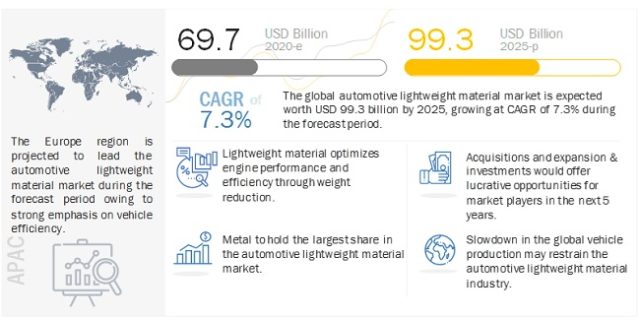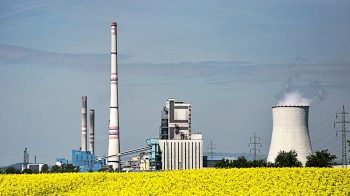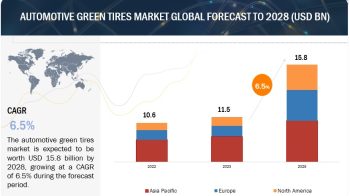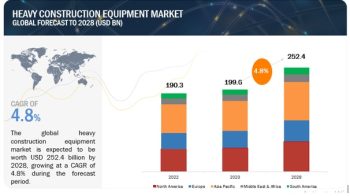
The global Automotive Lightweight Material Market is projected to grow from USD 69.7 billion in 2020 to USD 99.3 billion by 2025, at a CAGR of 7.3% during the forecast period. The increasing stringency of vehicle emission and fuel economy regulations and growing government initiatives for vehicle weight reduction are expected to drive the growth of the automotive lightweight material market.
“Metals to be the largest segment, By Material Type”
Metals is estimated to be the largest segment in the automotive lightweight material market. Aluminum has the highest demand among metals, followed by HSS. The use of lightweight materials such as aluminum and HSS is higher in developed regions such as Europe and North America compared to developing regions such as Asia Oceania and RoW. Initially, the normal heavy steels would be replaced with light metals such as HSS that are available in abundance. Also, the usage of lightweight materials is high in plug-in hybrid and electric vehicles. Many OEMs plan to use lightweight materials in their upcoming models. Hence, the use of lightweight materials is expected to increase in all automotive components.
Download PDF Brochure @ https://www.marketsandmarkets.com/pdfdownloadNew.asp?id=23937731
“Powertrain to be the fastest growing market for automotive lightweight material market, by Application”
Powertrain is expected to be the fastest growing market, by application, during the forecast period. Powertrain accounts for more than 27% of the vehicle weight and hence has a huge potential for application of lightweight material. Therefore, the use of lightweight material has increased in the powertrain in recent years. For instance, the engine blocks were conventionally made of heavy steel and cast iron. However, with the light-weighting trend, aluminum housings have now replaced conventional materials. Also, cylinder block and head, which was made of cast iron, is now made of lightweight aluminum.
“Europe is estimated to be the largest market for automotive lightweight material”
The European automotive industry has been using lightweight materials for manufacturing vehicles since a long time. Europe is the manufacturing hub for leading premium car manufacturers such as Mercedes, Audi, BMW, Porsche, Alfa Romeo, Ferrari, Aston Martin, Bentley, and Jaguar. As a result, Europe has also become the hub for vehicle lightweighting. Member nations of the European Union are now following Euro 6 norms, which will have the knock-on effect of reducing pollutants such as nitrogen oxide and carbon monoxide, improve the fuel economy, and lower the CO2 emission levels. The standards for passenger car and commercial vehicle for 2020 are 95g/km and 147g/km of CO2, respectively. The lightweight material manufacturers and suppliers are investing heavily in R&D to create new and advanced lightweight materials. This has also helped in optimizing engine performance and efficiency through weight reduction. These efforts of automotive manufacturers are expected to drive market growth in the European region.
Key Market Players:
The automotive lightweight material market is dominated by global players and comprises several regional players. The key players in the automotive lightweight material market are BASF SE (Germany), Covestro AG (Germany), LyondellBasell Industries Holdings B.V. (Netherlands), Toray Industries, Inc. (Japan), ArcelorMittal (Luxembourg), thyssenkrupp AG (Germany), Novelis, Inc. (US), Alcoa Corporation (US).
Request Free Sample Report @ https://www.marketsandmarkets.com/requestsampleNew.asp?id=23937731


